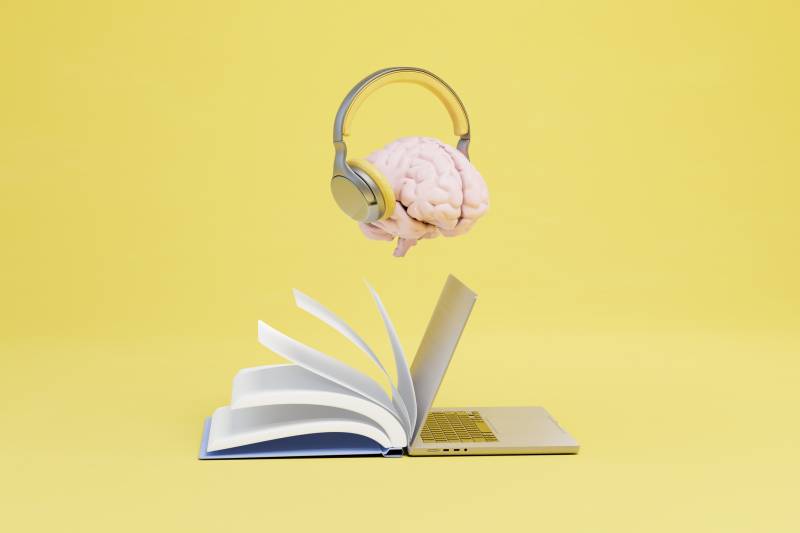Instead of looking at blood flow, a team of Israeli scientists analyzed electrical activity in the brains of 6- to 8-year-olds. When the children read on paper, there was more power in high-frequency brainwaves. When the children read from screens, there was more energy in low-frequency bands.
The Israeli scientists interpreted these frequency differences as a sign of better concentration and attention when reading on paper. In their 2023 paper, they noted that attention difficulties and mind wandering have been associated with lower frequency bands – exactly the bands that were elevated during screen reading. However, it was a tiny study of 15 children and the researchers could not confirm whether the children’s minds were actually wandering when they were reading on screens.
Another group of neuroscientists in New York City has also been looking at electrical activity in the brain. But instead of documenting what happens inside the brain while reading, they looked at what happens in the brain just after reading, when students are responding to questions about a text.
The study, published in the peer-reviewed journal PLOS ONE in May 2024, was conducted by neuroscientists at Teachers College, Columbia University, where The Hechinger Report is also based. My news organization is an independent unit of the college, but I am covering this study just like I cover other educational research.
In the study, 59 children, age 10 to 12, read short passages, half on screens and half on paper. After reading the passage, the children were shown new words, one at a time, and asked whether they were related to the passage they had just read. The children wore stretchy hair nets embedded with electrodes. More than a hundred sensors measured electrical currents inside their brains a split second after each new word was revealed.
For most words, there was no difference in brain activity between screens and paper. There was more positive voltage when the word was obviously related to the text, such as the word “flow” after reading a passage about volcanoes. There was more negative voltage with an unrelated word like “bucket,” which the researchers said was an indication of surprise and additional brain processing. These brainwaves were similar regardless of whether the child had read the passage on paper or on screens.
However, there were stark differences between paper and screens when it came to ambiguous words, ones where you could make a creative argument that the word was tangentially related to the reading passage or just as easily explain why it was unrelated. Take for example, the word “roar” after reading about volcanoes. Children who had read the passage on paper showed more positive voltage, just as they had for clearly related words like “flow.” Yet, those who had read the passage on screens showed more negative activity, just as they had for unrelated words like “bucket.”
For the researchers, the brainwave difference for ambiguous words was a sign that students were engaging in “deeper” reading on paper. According to this theory, the more deeply information is processed, the more associations the brain makes. The electrical activity the neuroscientists detected reveals the traces of these associations and connections.
Despite this indication of deeper reading, the researchers didn’t detect any differences in basic comprehension. The children in this experiment did just as well on a simple comprehension test after reading a passage on paper as they did on screens. The neuroscientists told me that the comprehension test they administered was only to verify that the children had actually read the passage and wasn’t designed to detect deeper reading. I wish, however, the children had been asked to do something involving more analysis to buttress their argument that students had engaged in deeper reading on paper.
Virginia Clinton-Lisell, a reading researcher at the University of North Dakota who was not involved in this study, said she was “skeptical” of its conclusions, in part because the word-association exercise the neuroscientists created hasn’t been validated by outside researchers. Brain activation during a word association exercise may not be proof that we process language more thoroughly or deeply on paper.
One noteworthy result from this experiment is speed. Many reading experts have believed that comprehension is often worse on screens because students are skimming rather than reading. But in the controlled conditions of this laboratory experiment, there were no differences in reading speed: 57 seconds on the laptop compared to 58 seconds on paper – statistically equivalent in a small experiment like this. And so that raises more questions about why the brain is acting differently between the two media.
“I’m not sure why one would process some visual images more deeply than others if the subjects spent similar amounts of time looking at them,” said Timothy Shanahan, a reading research expert and a professor emeritus at the University of Illinois at Chicago.
None of this work settles the debate over reading on screens versus paper. All of them ignore the promise of interactive features, such as glossaries and games, which can swing the advantage to electronic texts. Early research can be messy, and that’s a normal part of the scientific process. But so far, the evidence seems to be corroborating conventional reading research that something different is going on when kids log in rather than turn a page.


